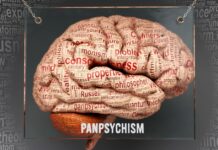Everyone supposes that your thoughts and emotions drive your facial expressions. But how may people know that facial expressions also drive your mood?
Not much is written about this but there are clues. They say if you look UP (head held high), you can’t feel depressed. But if you look down (head lowered) you can’t feel cheerful. Try it, you’ll largely agree it’s true, though there are exceptions to everything, of course.
You may know how to do a “happy face”: you smile, even if it hurts, lift your head up and look the world in the eye. Pretty soon you start feeling things are not so bad and if you can keep it up for long enough, you’ll start to smile for real!
If you want to really change how you feel, start laughing… Just laugh for no reason. That’s alien to a lot of people; the common response is “I have nothing to laugh about.” But you don’t need a reason; you laugh for no reason! Pretty soon the world seems a brighter, happier place.
This stuff is not secret… but you don’t see it written about very much. Yet it’s very important; if you can change your mood by changing your face and posture, why don’t we do it more? Put the emotion there and then you’ll start to feel it. Clowns do this famously: the broken-hearted clown who smiles and acts ever-so-jolly anyway, getting the kids to laugh. It’s an archetype.
The NLP people (neuro-linguistic programming) have had a cute question for decades: we ask a person “How do you DO happiness?” or “How do you DO angry?”

The idea is to make the person realize that emotions don’t just happen to a person, as everybody supposes. He or she CREATES it for themselves. So a person might answer that he or she does angry by standing aggressively, eyeballing a person in a threatening way, raises the pitch and volume of the voice and feels hot and red in the face (that’s what I do, anyway!)
I do not go along with the corny stance that “She made me angry”; it’s hogwash. You make yourself angry, in response to something or other. Same with sadness, fear and despair.
Nobody teaches these skills. But it should be taught standardly—at school, at Sunday school and in the home—in the way we are taught to be polite, non-abrasive, respectful and honest. We should learn how to “do” only the best emotions and, naturally, learn how to interrupt or spoil the making of poor emotions!
Botox
Now what about Botox injections? It’s a treatment that paralyzes your facial expressions… Has anyone asked the question: does that not affect or even paralyze your moods too?
Surprisingly, the answer is a resounding YES. Quite a number of disturbing studies have made it clear that losing the power of facial expression also diminishes mood, or what doctors and psychologists call “affect”.
This should be no surprise, if you have grasped what I said in the first three paragraphs.
And that’s in addition to the many and often dangerous side-effects caused by Botox. That stuff is deadly: a jam jar full of Botox powder could kill everyone on planet earth. OF COURSE the manufacturers and proponents play down the dangers; it’s totally safe in the right hands, they say; the quantities are so tiny, they pose no threat.
All such reassurances are based on the assumption that the injected Botox stays where it is put. But that’s a load of hooey! You don’t expect penicillin or B12 shots to stay at the site of the injection, do you? What would be the point?
Yet, we are supposed to accept the con that Botox does, indeed, stay put.
Then why do some people end up with difficulty swallowing, speaking or breathing? That’s not consistent with the “official” narrative (backed by the FDA) is it?
In fact the manufacturer Allergan’s website is quite candid about the dangers, and I quote:
BOTOX® Cosmetic may cause serious side effects that can be life threatening.
Including: Problems swallowing, speaking, or breathing, due to weakening of associated muscles, can be severe and result in loss of life. You are at the highest risk if these problems are pre-existing before injection. Swallowing problems may last for several months.
Would anyone in their right mind seriously submit to the threat of death, just to get rid of wrinkles? Of course not… So they lie and hide the truth. Patients are told it’s perfectly safe. There is no real informed consent.
Spread Of Toxin Effects
The truth is, the toxin does not stay put. The effect of botulinum toxin may affect areas away from the injection site and cause serious symptoms including: loss of strength and all-over muscle weakness, double vision, blurred vision and drooping eyelids, hoarseness or change or loss of voice, trouble saying words clearly, loss of bladder control, trouble breathing, and trouble swallowing.
We now know that botulinum toxin can travel widely beyond the site of injection directly to the central nervous system. Science Daily reported on this finding in 2015. Measurable amounts of the potent toxin used for cosmetic surgery escapes into the central nervous system, they said.
UQ Queensland Brain Institute laboratory leader Professor Frederic Meunier said “The discovery that some of the injected toxin can travel through our nerves is worrying, considering the extreme potency of the toxin. “
“While no side-effects of using Botox medically have been found yet, finding out how this highly active toxin travels to the central nervous system is vital because this pathway is also hijacked by other pathogens such as West Nile or Rabies viruses.”
This comment is disingenuous, because medical side effects have been noted and published widely. I do not believe he could be unaware of these publications.
Dr Tong Wang, a Postdoctoral Research Fellow in Professor Meunier’s laboratory, discovered that most of the toxin is transported to a cellular dump where it is meant to be degraded upon reaching the central nervous system.
“For the first time, we’ve been able to visualize single molecules of Botulinum toxin traveling at high speed through our nerves,” Dr Wang said.
“We found that some of the active toxins manage to escape this route and intoxicate neighboring cells, so we need to investigate this further and find out how.”
Findings of the research are published in the Journal of Neuroscience.1
But the REAL worry is not mishaps and complications of the procedure. It’s whether or not Botox is capable of altering someone’s state of mind in an adverse way. And, yes, it can.
Something which would horrify many aware spiritual citizens is that Botox use recommends that it be injected directly into the procerus muscle, dead in line with the mystical Third Eye (basically the pineal gland). In Chinese acupuncture this point is known as the Yin Tang, and is known as an “extraordinary point,” i.e. it stands on its own and is not part of any existing meridian.
Yin Tang is said to calm the spirit, ease anxiety & worry, it activates intuition, & brings profound presence. It shouldn’t be blasted by a toxic chemical.
I aver that the major harm from Botox is that it clouds emotions, reduces affect (less emotional feeling) and blocks the sweetness of human interaction. Here’s proof.
A 2009 study titled, “The link between facial feedback and neural activity within central circuitries of emotion–new insights from botulinum toxin-induced denervation of frown muscles,” found that Botox treatment reduced the activation of the left amygdala and its functional coupling with brain stem regions implicated in autonomic manifestations of emotional states.2
A 2010 study titled, “Cosmetic use of botulinum toxin-A affects processing of emotional language, reveals that Botox-induced blocking facial expression by peripheral denervation of facial musculature selectively hinders emotional language processing.
A 2011 study titled, “Embodied Emotion Perception,” found that Botox injections dampened emotion perception by interfering with muscular feedback from the face, effectively interfering with their ability to empathize.
And of course it blocks the ability to generate warm, friendly emotions, as described in the opening paras.
2014 study titled, “Botulinum toxin-induced facial muscle paralysis affects amygdala responses to the perception of emotional expressions: preliminary findings from an A-B-A design, ” found that Botox affects emotional experience by interfering with the feedback signals from facial muscles. Specifically, Botox interfered with amygdala activity, a part of the brain’s limbic system associated with memory, survival instinct, and emotions in general.
Touchy-Feely? Not after Botox I’m afraid.
A 2014 study titled, “Altered cortical activation from the hand after facial botulinum toxin treatment,” found that Botox-induced loss of facial movements alters the cortical circuits involved in processing tactile inputs from the hand. The researchers concluded: “This suggests that the limited paralysis of facial muscles induced during cosmetic interventions designed to smooth lines and wrinkles on the face is sufficient to alter the cortical processing of tactile inputs from the hand.”
After Botox, you can’t feel objects or people with the same degree of subtlety!
2016 study titled, “Deeper than skin deep – The effect of botulinum toxin-A on emotion processing,” found that emotional stimuli were blunted after Botox use, and that they became slower at categorizing emotional facial expressions under time pressure.3
And what started me on this was a recent (2023) study in the British journal, The New Scientist, 23 March 2023, which reports that researchers conducted fMRI brain scans on people before and after receiving Botox injections, which confirmed that the treatment appears to alter our ability to react to emotion in others.4
?This is a huge price to pay for getting rid of wrinkles, WHICH ARE NOT PATHOLOGY and should not be medicalized. I must share with my Third Age Wisdom friends that, as Clarence Day Jr. (1874 – 1935) wrote, “Age should not have its face lifted, but it should rather teach the world to admire wrinkles as the etchings of experience and the firm line of character.”
Personally, I recall with huge merriment Sir Billy Connolly describing himself as “windswept and interesting”! You gotta love Billy!

To your worthy years and learning!
Prof. Keith Scott-Mumby
The Official Alternative Doctor
References:
- University of Queensland. “Botox makes unnerving journey into our nervous system.” ScienceDaily. ScienceDaily, 16 April 2015. <www.sciencedaily.com/releases/2015/04/150416094051.htm>
- Cerebral Cortex, Volume 19, Issue 3, March 2009, Pages 537–542, https://doi.org/10.1093/cercor/bhn104
- https://pubmed.ncbi.nlm.nih.gov/27130038/
- https://www.newscientist.com/article/2365129-botox-injections-in-forehead-alter-brain-activity-linked-to-emotions/




